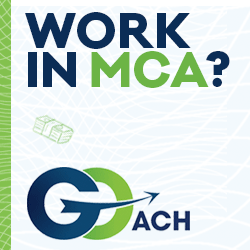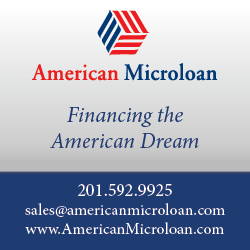Results 1 to 25 of 30
Threaded View
-
07-24-2020, 08:01 AM #2Senior Member











 Reputation points: 226125
Reputation points: 226125
- Join Date
- Feb 2017
- Posts
- 3,395
It will require some more sales skills. Harder to sell something with APR that is impossible to calculate APR, and will confuse many many clients. Will also confuse many many brokers who love "selling" and bait and switch. This will force people to describe factor rates to NY clients for MCA, and discount rates for factoring, very clearly. Anyway these clients look at it as 50% money, they know it's no comparison the bank.
It will probably prevent a few "sales". Fewer bait and switch, which means less confusion on the merchant's part, which means less defaults?
Here's what IOU sent me about how to make the customer costs shrink:
SALES TIP: “Make the numbers shrink.” When you are trying to sell alternative financing, you have to learn about the business, all their sources of debt capital, and how the alternative piece plays into that… in addition to the use of funds discussed in the last sales tip. The key is getting the business decision maker to focus on the weighted cost of capital and not the singular “more expensive” piece.
With the right perspective, the cost of alternative debt is not that expensive. Most merchants are what I call “accidental business owners...” meaning they were very good at something, (plumbing, selling, inventing, networking) which accidentally lead to a business.
Accidental business owners do not often separate business ideas and funding from personal strategies aka they think “debt is bad” (personal concept) vs “debt is a low cost of funds” (business concept). Selling business funding requires gently educating merchants on business concepts.
Businesses are funded with debt and equity. Let’s look at the debt only piece of the pie in this sales tip. Debt capital comes in various forms: from trade lines (B2B “payment terms”), from traditional lenders like banks, from alternative lending sources like IOU Financial, and from other types of sources.
When you consider a “debt stack,” you also have to consider the “weight” of each piece. This means how much of the pie does a particular slice make up? If you only look at the alternative lending piece, 30% cost of capital can sound expensive, but let me show you how that is not always the case. As we know, the bigger the alternative debt loan, the more difficult it is to close (if the merchant is only focused on the alternative slice.) Let’s focus them on the whole pie and how that slice shrinks when weighted.
Most strong and healthy businesses do not only have one source of debt. Most take on debt for various purposes: real estate, equipment, inventory, soft costs, vehicles, and so on. To understand the average cost of debt between all sources, you have to take the weighted average.
If a company has $2,000,000 in total debt and only 25% of that is alternative financing used for inventory and the other sources have a lower cost of debt, the cost of the alternative financing begins to shrink. Yes, the others rise a little, but the weighted average cost is not overwhelming at all. See the chart below. As you can see, 30% cost of capital is not really 30% when you look at it from a total pie and weighted average. Yes, the smaller sources of capital rise a little… 5% becomes 12.25%, but conversely 30% becomes 12.25%... sell that!
Amount of Debt Weight Annual Cost Weighted Cost Use of Funds
$1,000,000 50% 7% 3.5% Real Estate
$500,000 25% 5% 1.25% Vehicles
$500,000 25% 30% 7.5% Inventory
Total $2,000,000 100% 42% 12.25%
Similar Threads
-
“New York Lawmakers Say State Must Stop Enabling Predatory Loans”
By WestCoastFunding in forum Merchant Cash AdvanceReplies: 42Last Post: 12-17-2018, 05:58 PM -
New York State Is Probing*Abuses in Small-Business Lending
By channin19 in forum Merchant Cash AdvanceReplies: 30Last Post: 12-05-2018, 09:18 PM -
Need funder Debt collection New York state
By David35 in forum Deal BinReplies: 3Last Post: 02-16-2015, 10:29 AM -
Direct funder needed for Debt collection New York State
By David35 in forum Merchant Cash AdvanceReplies: 0Last Post: 01-28-2015, 02:18 PM -
CAN CAPITAL passes 4 Billion Funded Milestone
By Businesscap in forum Merchant Cash AdvanceReplies: 16Last Post: 04-30-2014, 04:43 PM


 Reply With Quote
Reply With Quote















